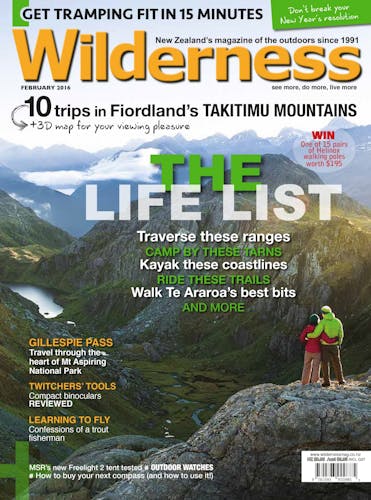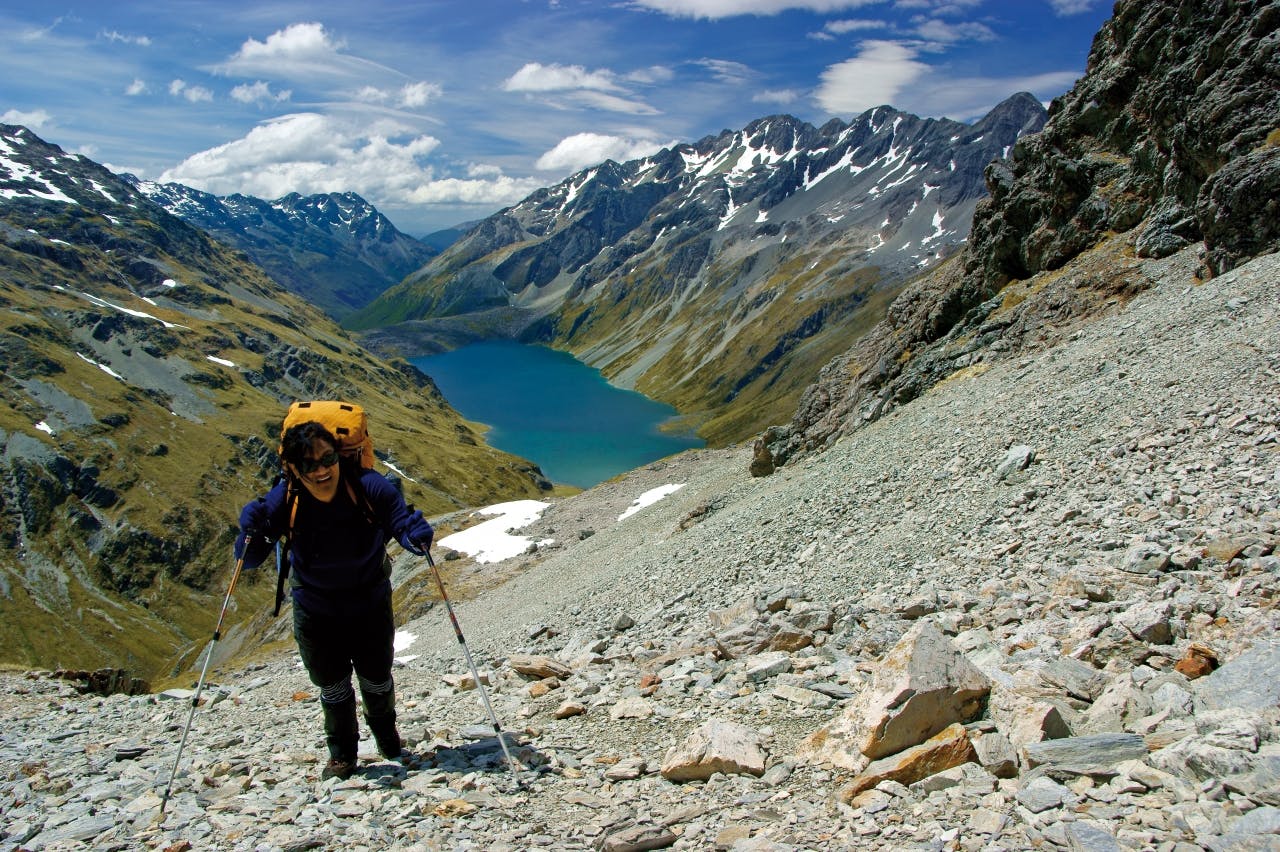Most of us don’t have the luxury of asking our boss for four months off work, so completing the entire length of the Te Araroa Trail isn’t a realistic option.
But that shouldn’t mean missing out altogether. Spanning the entire length of a country might be too optimistic but, as the country is only 450km wide at most, you shouldn’t be too far away from your local stretch.
Even better, why not make a week of it and complete the sections of trail most favoured by those who have walked the whole track.
Rob Wakelin, CEO of Te Araroa Trust, says there are several places people often remember as their favourites. “The Richmond Range, Nelson Lakes, Tararuas and the Motatapu Track are very popular,” he explains. “It’s hardcore tramping that’s physically and technically tough, so it’s challenging and where people might consider a favourite in hindsight.”
But there are easier sections many enjoy too, such as the Whanganui River and down the east coast of Northland. “The scenery’s so spectacular up in Northland – the white sand, pohutukawa, rocky headlands. It’s very popular.”
But, as Wakelin points out, different people like different sections depending on their particular experience at that place; the weather, the people they meet, their level of fatigue, may contribute to a totally different perspective of the same place.
Wellington-based Jory Akuhata, who walked the trail last summer, tried to catch his own food and loved the Pureora Forest because of the game he encountered on the way.
“The Richmond Ranges were pretty cool, too,” he adds. “You get to walk through three types of environment there – beech forest, high alpine trails and the last section is super-rocky.”
For Naresh Kumar, who famously completed the trail in sandals last summer, it was the Tararuas that most won his heart. “I was on the ridgeline on a freezing day,” he recalls. “The tussock was frozen with icicles and, as the sun rose, the icicles melted and shattered like glass over the floor. It was like listening to an orchestra.”
For Kuldeep Nandurkar, who loved the trail so much he’s now returned to New Zealand from India to walk to every DOC hut, he most enjoyed the spiritual experience of being at Cape Reinga.
With more people completing the TA each year, the trail’s constantly being improved, and accommodation is available across the whole route, whether it’s a basic campsite, a hut, or something more glamorous.
Enjoy Te Araroa’s most popular bits
1. Northland’s east coastline
The stretch that gets you closest to Northland’s coastline is from Whananaki right down to Whangarei Heads. It leads past the gorgeous seaside towns of Matapouri and Ngunguru, and the last night can be spent at the lovely Peach Cove Hut, finishing with a short walk to Urquhart Bay.
2. The Tararuas
For TA trampers heading from north to south this is their first experience of rugged alpine ridges. The trail follows the north-west part of the Tararuas, beginning at Gladstone, near Levin, then heading to Otaki Forks or Mangaore South Road end near Waikanae, via the likes of Mt Crawford and Waitewaewae Hut.
3. The Richmond Ranges
A terrific introduction to the South Island – nine days away from civilisation, crammed with true backcountry huts and filled with ridge walks and peaks such as Starveall, Slaty and Rintoul. Start at Pelorus River and finish at SH63 near St Arnaud.
4. Waiau Pass
For many, this is the toughest part of the trail, crossing two major passes (Travers and Waiau) and passing lakes Rotoiti and Constance, and the very special Blue Lake. Start from St Arnaud and don’t encounter civilisation again until reaching Lewis Pass Road (SH7) five days later.
5. Motatapu Track
A high country track heading from Glendhu Bay on the shores of Lake Wanaka to Arrowtown, via the historic Macetown gold mining village and Fern Burn Hut.








